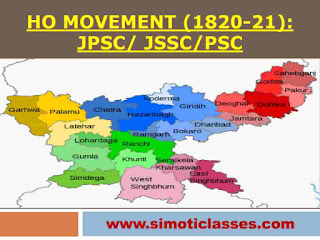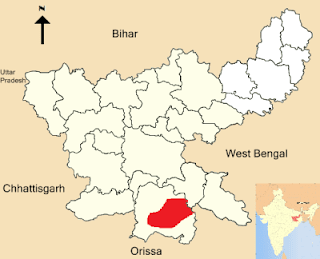Ho Movement (1820-21)
The abode of the Ho people was known as 'Ho Desam'= the land of the Ho caste or Kolhan= Kol place.
Ho Desam was never owned by the Mughals or Marathas. Although the Singh kings of Porhat had influence over them, they were equal and not subordinate to the Singh dynasty. They did not pay any regular tax to the Singh kings, only gave some gifts from time to time. As a result of being free from external control for a long time, he became freedom-loving and a fighter in nature. For this reason, during the company period, these fighters were famous as 'Kol'.
1820: At the request of Raja of Singhbhum, political agent Major Rafsej entered Ho Desam with an army. The British were victorious in a battle with the Ho people on the banks of the Roro river near Chaibasa.
Despite this repression, the Ho of only the northern part of the Desam agreed to pay taxes to the Raja of Porhat. The Ho people of the southern Kolhan continued to oppose the British. Ho people started creating a disturbance in the areas of the border states. As a result of these activities of the Ho people, the Porhat king again had to plead for help from Rafsej.
1821: As a result, a large army under the leadership of Colonel Richard was sent against the Ho people. The Ho people confronted Richard for a month but eventually found the opposition meaningless and thought it better to make a treaty with the company.
The main terms of the treaty were;
- The people agreed to pay 8 annas (50 paise) per plow annually to their kings and zamindars.
Despite this treaty, the disturbances in Kolhan did not end, in 1831-32 the Ho people took an active part in the Kol rebellion.
Key facts of Ho rebellion (for MCQ):
- The Ho people of Chotanagpur revolted fiercely in 1820-21.
- This rebellion took place in the area of Singhbhum.
- The main reason for this rebellion was the exploitation by Raja Jagannath Singh and its backwardness to the British.
- The Ho rebellion was suppressed in 1820-21 under Major Rusage and in 1837
- under Captain Wilkinson.



















0 comments:
Post a Comment